Hellcat Mk.I
Weekend Edition
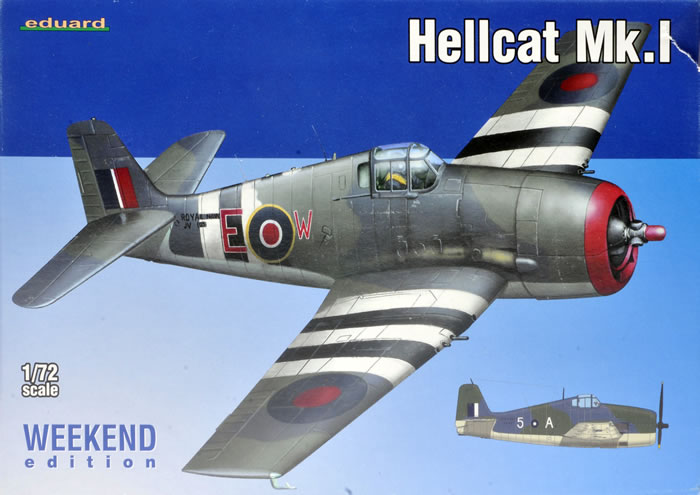
Eduard, 1/72 scale
S u m m a r y : |
Catalogue Number: |
Eduard Kit No. 7437 – Hellcat Mk.I Weekend Edition |
Scale: |
1/72 |
Contents & Media |
45 grey and five clear styrene parts, with decals for two subjects. |
Price: |
On-line Stockist |
Price |
Eduard |
US$16.95 |
Hannants |
£9.16 |
Squadron |
US$19.95 |
Modelimex |
€8.47 |
Hobby Link Japan |
¥1,200 |
For currency conversion click here. |
Review Type: |
First Look. |
Advantages: |
Eduard’s are the best 1/72-scale Hellcat kits available, and represent great value for money. |
Disadvantages: |
None noted. |
Conclusion: |
Eduard’s Hellcats are the best available in ‘The One True Scale’, so it is no surprise that that their Weekend Edition of the Hellcat Mk.I is a superb kit. It is very accurate, has excellent levels of detail and very good fit, and is great value too.
If you dislike PE or do not want the extra detail level it can provide then this is the kit for you rather than the more costly Profipack Edition.
This kit is straightforward and pleasurable to build; I definitely recommend it. |
Reviewed by
Mark Davies

Eduard’s 1/72 Fokker Dr.I Weekend Edition is available online from Squadron.com
The Grumman F6F Hellcat was designed to replace the earlier F4F Wildcat and to counter the Japanese Mitsubishi A6M Zero; it was the United States Navy's dominant fighter in the second half of the Pacific War.
The British Fleet Air Arm (FAA) received 1,263 F6Fs under the Lend-Lease Act; initially it was known as the Grumman Gannet Mark I. The name Hellcat replaced it in early 1943 for the sake of simplicity, the Royal Navy at that time adopting the use of the existing American naval names for all the U.S.-made aircraft supplied to it, with the F6F-3 being designated Hellcat F Mk.I, the F6F-5, the Hellcat F Mk.II and the F6F-5N, the Hellcat NF Mk.II. A number were fitted with photographic reconnaissance equipment similar to the F6F-5P, receiving the designation Hellcat FR Mk.II.
Hellcats saw action off Norway, in the Mediterranean and in the Far East. The FAA Hellcats primarily faced land based aircraft in the European and Mediterranean theatres, and as a consequence experienced far fewer opportunities for air-to-air combat than their USN/Marines counterparts in the pacific theatre; they claimed a total of 52 enemy aircraft kills during 18 aerial combats from May 1944 to July 1945. However, 1844 Naval Air Squadron, on board HMS Indomitable of the British Pacific Fleet was the highest scoring unit, with 32.5 kills.
FAA Hellcats, as with other Lend-Lease aircraft, were rapidly replaced by British aircraft after the end of the war, with only two of the 12 squadrons equipped with the Hellcat at VJ-Day still retaining Hellcats by the end of 1945. These two squadrons were disbanded in 1946.
Source: Wikipedia
Choice of Boxings
I think that it is safe to say that most modellers view Eduard’s 1/72 Hellcat kits, first released in August 2011, as the best available in ‘The One True Scale’. I certainly believe this to be so. They come in several boxings that cover various versions of the F6F, generally as Weekend and Profipack Editions, although from time to time Overtrees are offered too.
Weekend Editions offer just the base kit and one or two decal options. ProfiPACK Editions add coloured and plain PE details, a canopy mask, and usually four of five decal options to the base kit. Overtrees are only available from Eduard’s online store, and consist of the base kit in a basic box without decals, instructions, or any other extras. All three types of boxing are tremendously good value for money in my view. Eduard also produces a range of accessories for their Hellcat kits.
The parts come in a sturdy top-opening box with the decals, clear and coloured sprues bagged individually in clear re-sealable cellophane. The instructions are printed on glossy paper as a booklet, and include a parts map, clear assembly drawings, colour printed markings guide and a monochrome stencil placement guide. These can be viewed or downloaded as a PDF by clicking here.
At the build’s completion there will be spare bombs, rockets and other bits left over because several different boxings are covered by the same sprues.
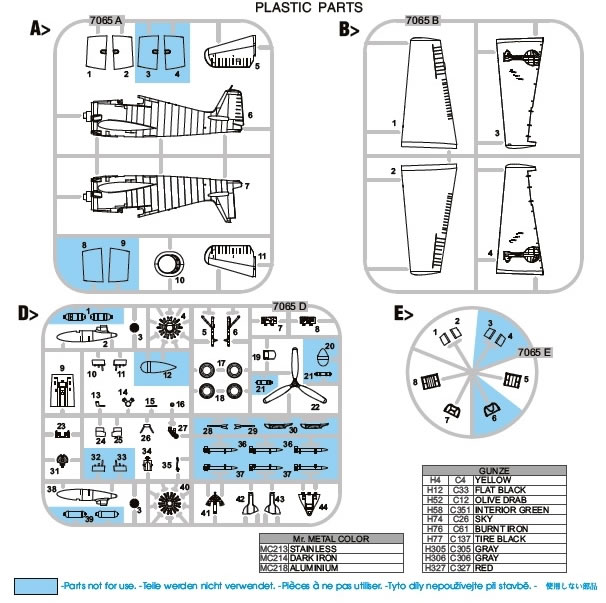
There have been plenty of articles on the Eduard Hellcat kits here on HyperScale, such as Brett Green’s first look review of the F6F-5 ProfiPACK Edition in late 2011, and mine of the F6F-5N ProfiPACK and F6F-3 Weekend Editions in 2012, and the F6F-5N Weekend Edition in June last year. I will therefore keep my observations brief because of the ground that has been covered before.
A very well detailed cockpit has the choice of a smooth or raised detail instrument panel, the former’s dial detail being provided as a decal. A pilot’s harness is also provided as decals; which I think are best cut out and left on their backing paper for a more 3D effect than just decal film can provide. They are more than adequate for a closed canopy model, and tolerable for an open canopy.
The kit provides two clear sliding hoods to properly cater for open or closed options. All of the transparent parts are thin, crisp, and very clear.
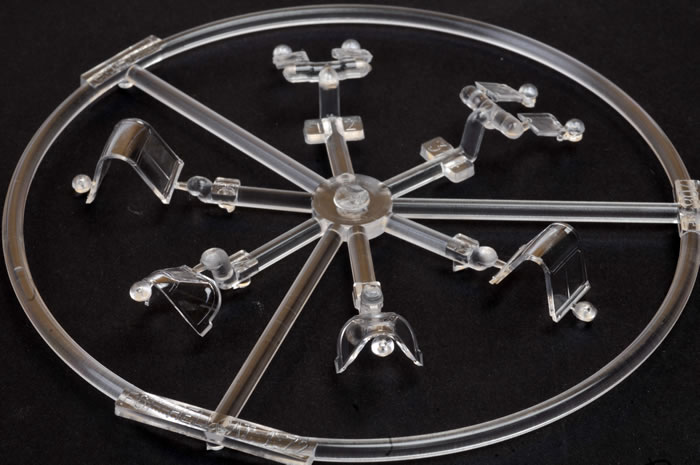
Surface detail is exquisite, consisting mainly of crisp and refined recessed panel lines; it also includes the lapped effect of the real panelling on the fuselage sides.
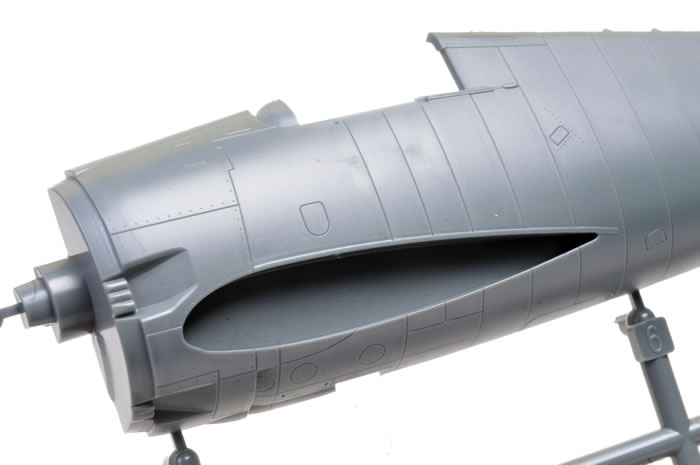
A nicely detailed engine and prop are also provided, and the Hellcat’s distinctive cowl shape when viewed head on is well captured.
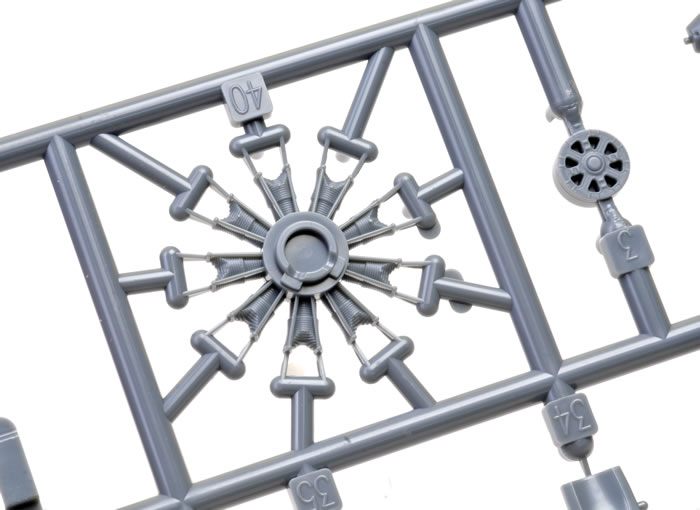
A nice touch is the way the choice of ribbed or diamond treaded tyres are moulded separately from the wheel rims, making painting of these items a breeze. The tail wheel which is moulded with its leg attached solidly to the wheel door by a web of plastic, rather than having a gap between the leg and door as might have been possible using two parts. The web area can be shadowed with a wash, or the door and web removed and replaced with a plastic-card item.
I can report that Eduard’s Hellcat is a pleasure to build, as I built the Profipack Edition of the F6F-5N and wrote a brief build article for HyperScale almost five years ago.
The parts breakdown is straightforward and the fit very good. One small point I would mention is that the antenna mast hole is offset slightly to port from the centreline. This is not a case of half-hole missing from the starboard fuselage as I thought was the case when I built mine, the mast is supposed to be just offset very slightly to port. However, one of the markings options supplied with this boxing (JV 105) has just the base of the antenna fitted.
Colours & Markings
The two decal options are both painted in disruptive camouflage using the US equivalents of Dark Slate Grey and Extra Dark Sea Grey over Sky:
- JV 105 / E-W, HMS Emperor, Aegean Sea, September 1944, and

- FN 427 / 5-A, flown by SubLt McKenzie, HMS Indomitable, Bay of Bengal, October 1944.

The kit’s colours and markings guide is cross-referenced to the Gunze Aqueous and Mr. Color brands of paint. They describe the colour using Gunze’s paint names of Olive Drab, Gray and Sky, along with the applicable paint numbers.
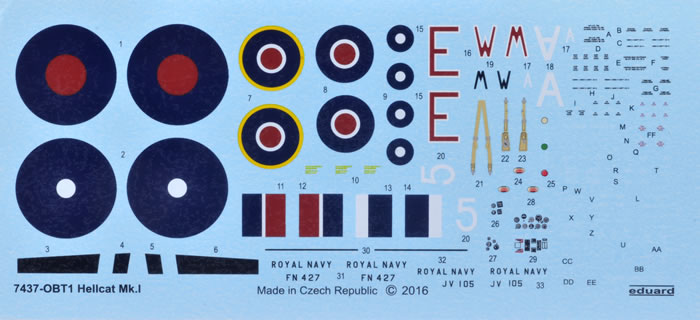
The kit decals appear to be of excellent quality and include stencilling and prop logos.
Eduard’s Hellcats are the best available in ‘The One True Scale’, so it is no surprise that that their Weekend Edition of the Hellcat Mk.I is a superb kit. It is very accurate, has excellent levels of detail and very good fit, and is great value too.
If you dislike PE or do not want the extra detail level it can provide then this is the kit for you rather than the more costly Profipack Edition.
This kit is straightforward and pleasurable to build; I definitely recommend it.
Thanks to Eduard for the sample
Review Text and Images Copyright © 2017 by Mark Davies
Sprue Photos Copyright © 2017 by Brett Green
Page Created 19 April, 2017
Last updated
19 April, 2017
Back to HyperScale Main Page
Back to Reviews Page |
